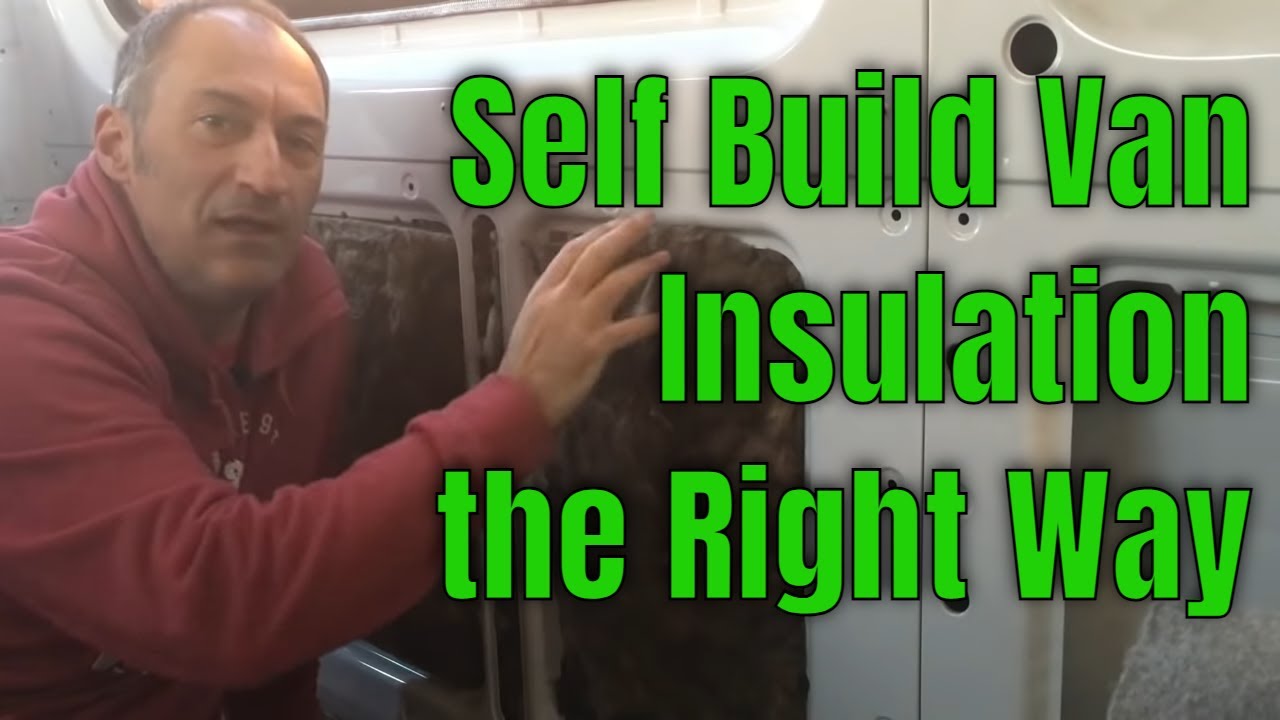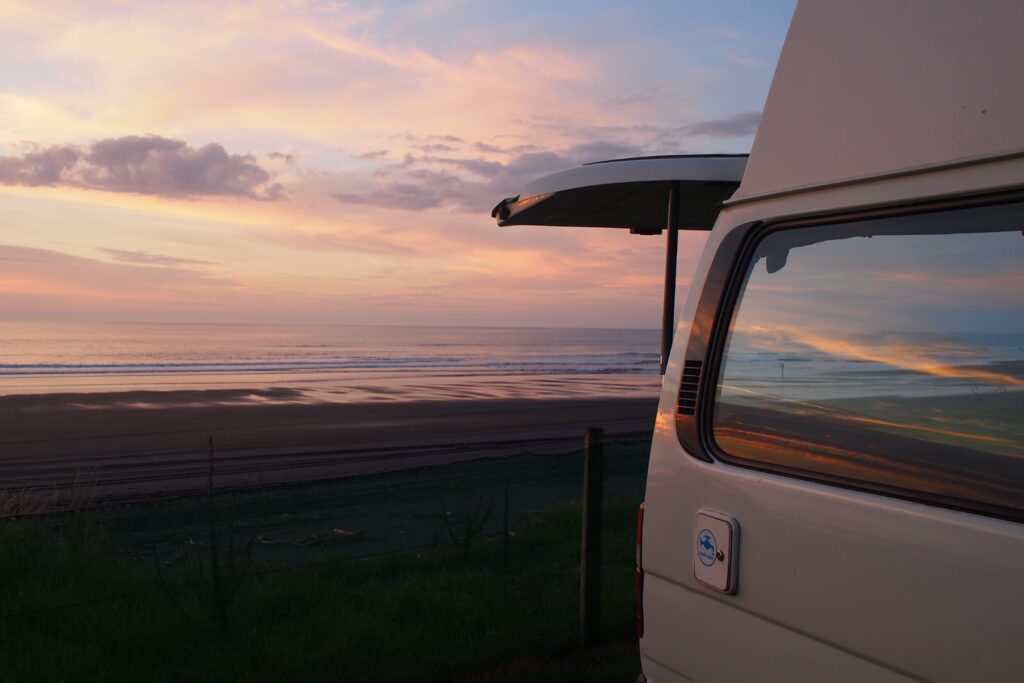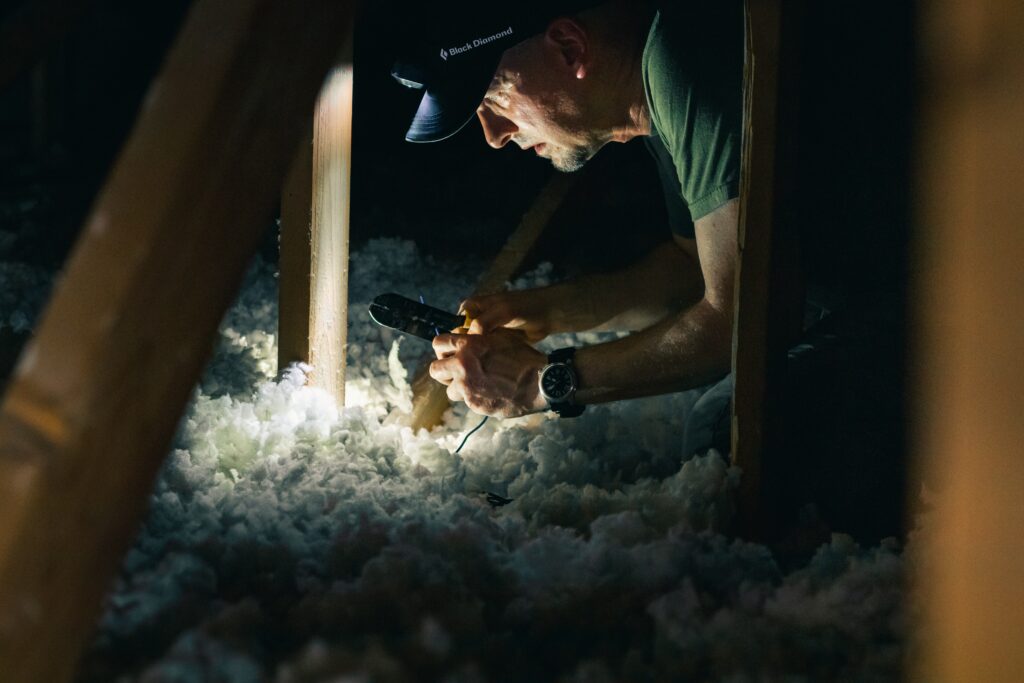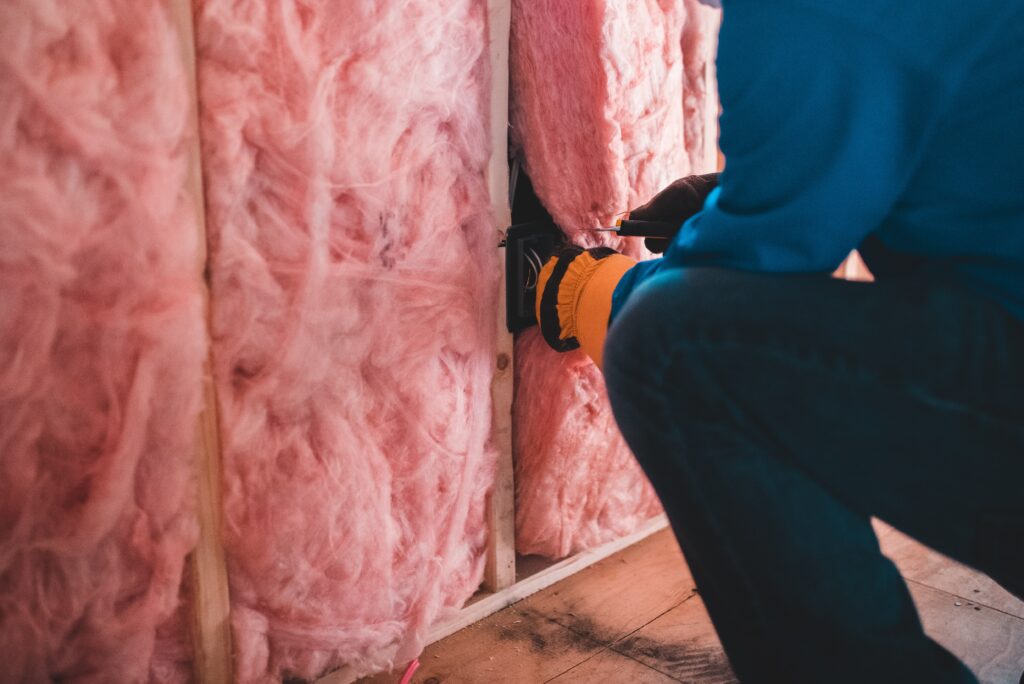
The name of the video is “Vanlife Insulation: Earthwool and Kingspan PIR Thermaboard Installation.” In this video, the speaker discusses the installation of Earthwool Insulation and Kingspan PIR Thermaboard in the walls and ceiling of a van using stick pins. The insulation is wrapped with a silver foil vapor barrier and foil tape. The video provides technical details on the insulation products and encourages viewers to ask for help or further information in the comments section. The content focuses on a Sprinter van conversion and the process of insulation, with the speaker using recycled materials for the bottom of the van and solid Kingspan insulation for the wall panels. They also mention the need to leave out certain areas for water pipes and control cables. The speaker emphasizes the importance of proper insulation to combat cold weather and concludes the video by thanking viewers for watching and inviting them to subscribe, leave comments, and share the videos on social media.

Introduction to Vanlife Insulation
As a vanlife enthusiast, insulation is a crucial aspect of creating a comfortable and livable space within my Sprinter van conversion. Adequate insulation ensures that the interior temperatures are regulated, preventing extreme heat or cold from penetrating the van’s walls. In addition, insulation helps to reduce noise transmission from the outside, creating a peaceful and tranquil environment inside the van. In this article, I will discuss two popular choices for vanlife insulation: Earthwool and Kingspan PIR Thermaboard. I will also share my own installation process, technical details of these insulation materials, the use of recycled materials, creating a vapor barrier, and securing insulation in place. So let’s dive in!
Choice of Insulation Materials
When it comes to vanlife insulation, there are numerous options available in the market. However, after careful research and consideration, I decided to use Earthwool insulation and Kingspan PIR Thermaboard for my van conversion.
Earthwool Insulation
Earthwool insulation is a popular choice among vanlife enthusiasts due to its excellent thermal and acoustic properties. Made from a combination of recycled and naturally occurring materials, Earthwool is an eco-friendly option that provides reliable insulation. It is available in various forms, including rolls, batts, and boards, making it suitable for different areas of the van, such as walls, ceiling, and floor.
Kingspan PIR Thermaboard
Kingspan PIR Thermaboard, on the other hand, is a high-performance insulation panel that offers superior thermal efficiency. It is made from rigid polyisocyanurate foam, which provides excellent insulation properties while being lightweight and easy to install. The Thermaboard features a foil-faced finish, which further enhances its insulating capacity by reflecting radiant heat. This makes it an ideal choice for van conversions where space is limited, and every inch counts.
Installation Process
The installation process of vanlife insulation involves preparing the van’s walls, ceiling, and floor, and then fitting the insulation materials accordingly. Here is a brief overview of the installation process I followed:
Insulation for Walls and Ceiling
Firstly, I prepared the walls and ceiling by cleaning and removing any existing fixtures or obstructions. Then, starting from one corner, I applied the Earthwool insulation batts vertically along the walls, ensuring a snug fit between the wooden framework. Similarly, I installed the Earthwool insulation batts horizontally on the ceiling, securing them in place with stick pins.
Alternatively, for the areas where space was a constraint, such as around windows or curves, I used Kingspan PIR Thermaboard. The rigid foam insulation offered maximum insulation with minimal thickness. I carefully cut the Thermaboard panels to fit the specific shapes and sizes required, and securely fixed them to the walls and ceiling using a suitable adhesive.
Use of Stick Pins
To ensure the insulation materials stay in place, I used stick pins. Stick pins are long metal pins with sharp ends that are pushed through the insulation and into the van’s framework. This helps to hold the insulation securely and prevents sagging or shifting over time. I spaced out the stick pins evenly to provide adequate support and stability to the insulation batts.
Wrapping with Silver Foil Vapor Barrier and Foil Tape
To further enhance the insulation performance and create a vapor barrier, I wrapped the installed insulation with a silver foil vapor barrier. The vapor barrier serves to prevent moisture from entering the van and causing condensation, which can lead to mold and other issues. I secured the edges and seams of the vapor barrier using foil tape, ensuring a tight and leak-proof seal.
Technical Details of Earthwool Insulation
Earthwool insulation is manufactured using advanced ECOSE Technology, which involves using bio-based materials instead of traditional petroleum-based chemicals in the production process. This results in a low-emission binder that holds the insulation fibers together, making Earthwool safe and easy to handle.
Earthwool insulation provides excellent thermal conductivity, with a thermal resistance (R-value) of up to 4.3 per inch. It also offers superior acoustic performance, reducing the impact of outside noise by absorbing sound vibrations. Moreover, Earthwool is non-combustible and has a fire rating of up to 3 hours, ensuring the safety of the van’s occupants.

Technical Details of Kingspan PIR Thermaboard
Kingspan PIR Thermaboard is a high-density foam insulation board that offers exceptional thermal efficiency. With a thermal conductivity rating (lambda value) as low as 0.022 W/m·K, the Thermaboard provides excellent insulation while being minimal in thickness. This is particularly beneficial in van conversions where space is limited, allowing for maximum insulation without compromising the available living area.
The foil-faced finish of the Thermaboard further enhances its insulating properties. The reflective foil surface reflects radiant heat, preventing it from penetrating the van’s interior. This feature is particularly advantageous during hot summer days when the van is exposed to direct sunlight, helping to maintain comfortable temperatures inside the van.
Using Recycled Materials for Insulation
Sustainability is a significant concern for me, and I strive to minimize my environmental impact throughout my vanlife journey. To align with this philosophy, I incorporated the use of recycled materials for my insulation.
I sourced recycled denim insulation for the walls, which is made from old denim jeans and textile waste. The denim insulation not only provides excellent thermal and acoustic properties but also promotes the reuse of materials that would have otherwise been discarded. Additionally, I used recycled plastic insulation boards for the floor, contributing to reducing plastic waste and supporting a circular economy.
By using recycled materials, I not only lower my carbon footprint but also contribute to the conservation of natural resources, making my vanlife journey more sustainable and eco-friendly.

Creating a Vapor Barrier
In vanlife insulation, creating a vapor barrier is essential to prevent moisture build-up inside the van. Moisture can easily enter through the van’s structure or from external sources, such as cooking, showering, or even breathing. To counter this, I used Reflectix, a reflective foil insulation, to create a vapor barrier.
I cut the Reflectix to fit the dimensions of the van’s walls and ceiling and securely attached it over the installed insulation using foil tape. The foil tape acted as an adhesive and provided a tight seal, preventing any moisture from passing through. This vapor barrier not only protects the van from condensation-related issues but also helps to maintain a comfortable and healthy living environment.
Securing Insulation in Place
To ensure that the insulation stays in place and serves its purpose effectively, I relied on stick pins as a simple yet reliable method of securing the insulation.
Stick pins are inserted through the insulation and into the van’s framework, creating a firm connection. The sharp ends of the stick pins allow for easy penetration into the insulation material, while the wider heads keep them securely in place. By spacing out the stick pins evenly along the insulation batts, I provided ample support and stability, minimizing the risk of sagging or shifting over time.
The use of stick pins not only ensures the longevity of the insulation but also maintains the integrity of the van’s interior, creating a durable and well-insulated living space.

Conclusion
In conclusion, proper insulation is a vital aspect of vanlife, ensuring a comfortable, energy-efficient, and sustainable living space within a converted van. Through the use of insulation materials like Earthwool and Kingspan PIR Thermaboard, the installation process, and incorporating recycled materials, it is possible to create an insulated van that can withstand various weather conditions while minimizing the environmental footprint.
Looking ahead, I plan to continue exploring further insulation options and techniques for my van conversion, constantly striving to improve the comfort and efficiency of my living space.

